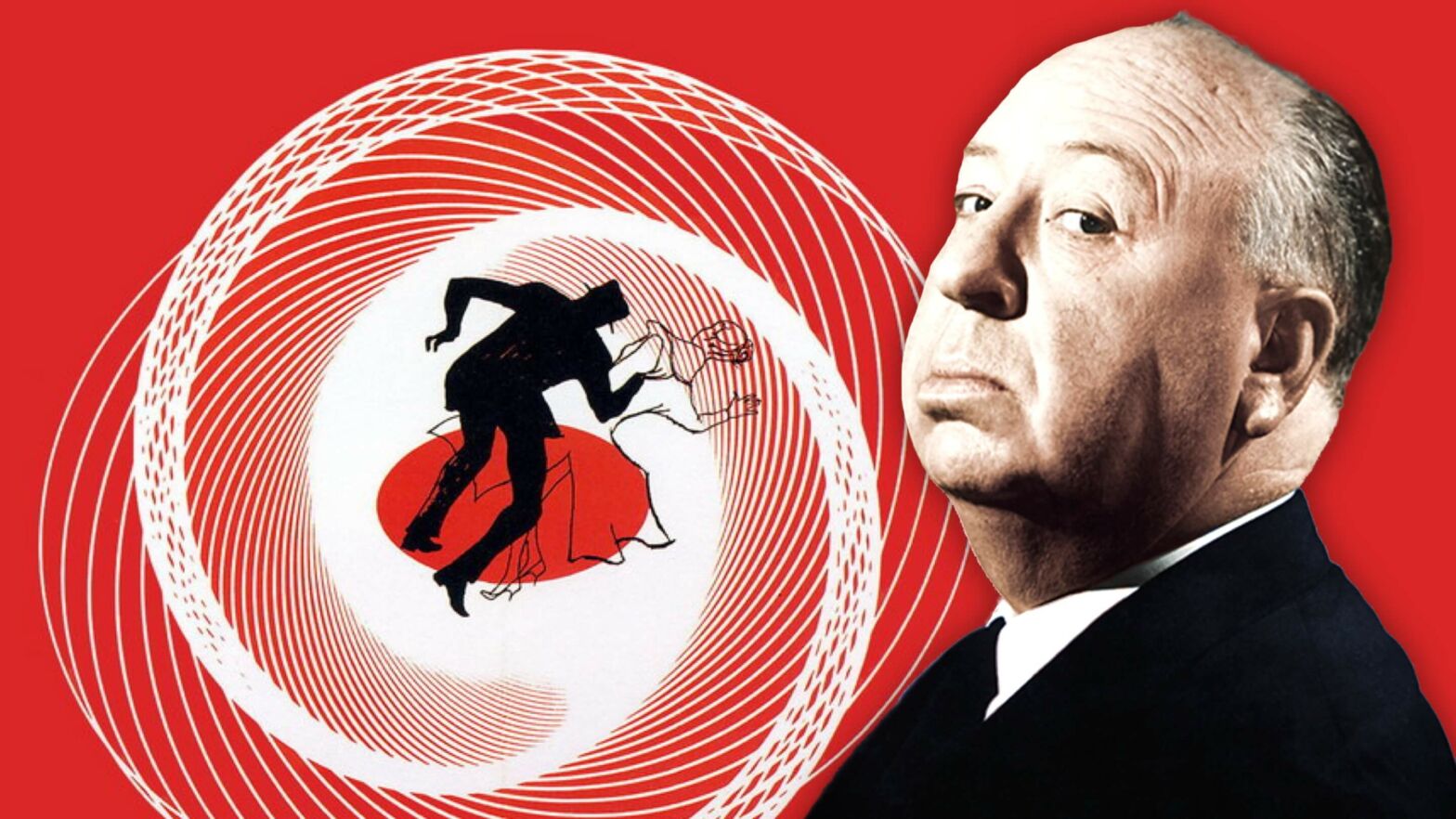After their first viewing, many people need the Vertigo movie explained. This Alfred Hitchcock film is beguiling and its initial release in 1958 was disappointing. It made significantly less than other Hitchcock films to date and it was widely panned by critics. Subsequently, Hitchcock bought back the rights to the film but it was widely unavailable until 1983. And yet, as years went by, Vertigo slowly ascended the ranks of Hitchcock’s filmography, from cult favorite to critical favorite. Now, it’s considered not only one of Hitchcock’s best films, but one of the greatest cinematic achievements of all time.
What is it about Vertigo that is so arresting? Why did it stay in audiences’ minds, even while it was out of rotation for 30 years? The answers can be found in its intricate plot, flawless form, and subtle yet profound themes.
Vertigo Movie Explained
Summarizing the Vertigo plot
What is the movie Vertigo about?
The Vertigo plot begins with a harrowing action sequence. We follow detective John “Scottie” Ferguson (played by James Stewart) in the midst of a rooftop chase. He slips and a fellow officer reaches down to help him, but Scottie is paralyzed with acrophobia and the other officer falls to his death.
We then leap forward in time: Scottie has retired from the force because of the traumatic experience. His good friend, Midge, says he needs another emotional shock to cure himself from his fear.
Gavin Elster, an old college acquaintance, asks Scottie to use his detective skills to track his wife, whom he believes is possessed.
Yes, literally.
Scottie reluctantly accepts and trails the wife, Madeleine. He watches her go to the portrait of a woman named Carlotta Valdes. Upon further investigation, Scottie learns that Valdes killed herself.
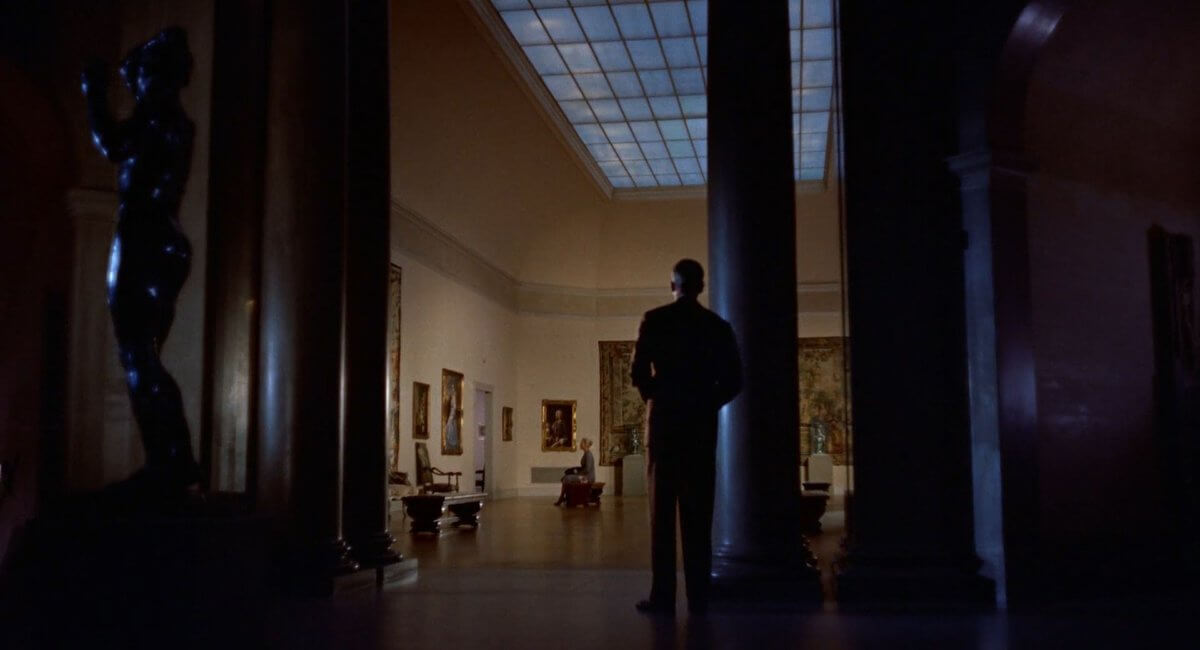
Scottie admiring… the painting • Vertigo plot
Gavin reveals to Scottie that Valdes is Madeleine’s great-grandmother; she is the woman who is possessing her.
Following her once more, Scottie witnesses Madeleine throw herself into the San Francisco Bay. Like a true gentleman, he dives in after her and saves her. He then takes her unconscious body to his apartment and takes her out of her wet clothes (gentleman status under review here).
She awakens and, after an awkward introduction, a connection begins to form.
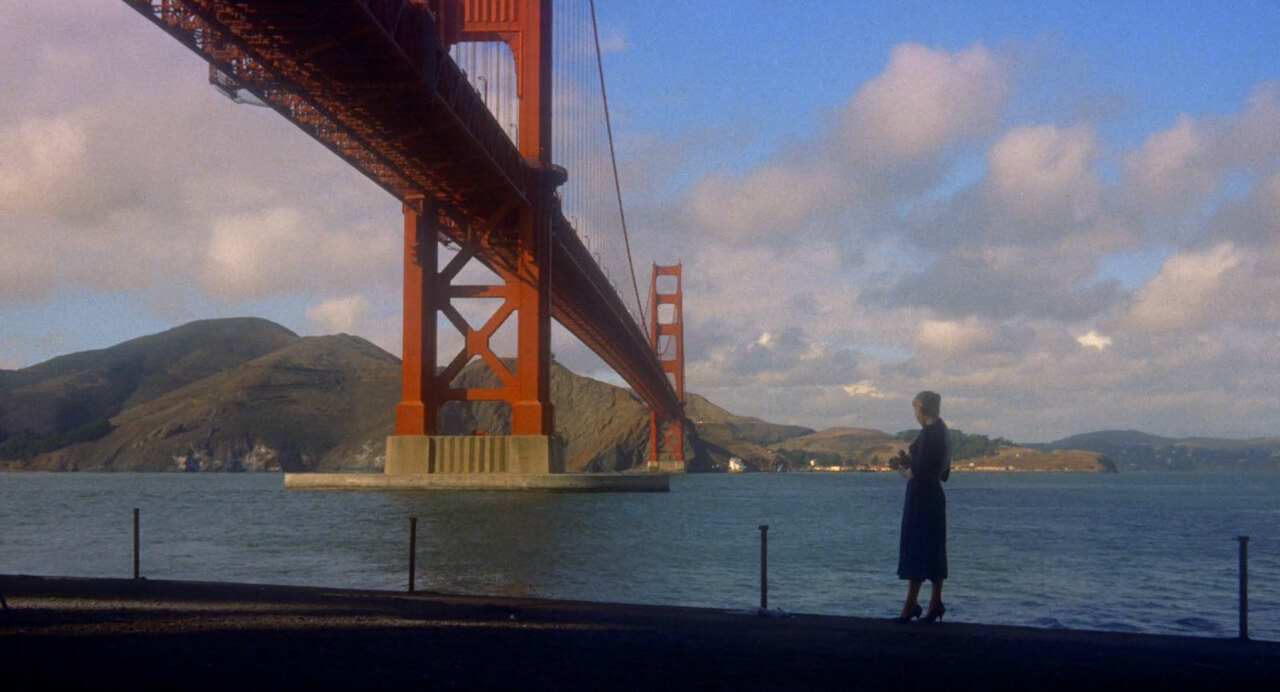
Watch out Scottie, Madeleine looks like she’s gonna jump • Vertigo plot
The next day, Scottie watches as Madeleine falls in and out of possession. They kiss by the sea as waves crash. It’s all very romantic.
Later, Madeleine describes a dream she had to Scottie, who recognizes the location she’s depicting as Mission San Juan Bautista. Once arrived, they declare their love for each other, but it’s not to last.
Madeleine sprints up the tower of the church, and Scottie tries to follow her but is beleaguered by his acrophobic vertigo. He watches Madeleine fall from the top of the tower to her death.
Though Madeleine’s death is ruled a suicide in which no one is at fault, Scottie falls into a deep, catatonic depression.
Once he’s (slightly) back on his feet, he sees a brunette, looks very similar to his lost love. This is Judy Barton. He begs her to go on a date and she relents.
Judy begins to write a letter to him, revealing that she in fact is Madeleine, or rather, she played Madeleine. It was an elaborate murder scheme conducted by Gavin: knowing Scottie was acrophobic, Gavin decided to have him trail Judy so that he would be a witness to her suicide and could testify that she was possessed. Instead of Judy jumping, it was the real wife, who was bound at the top of the tower and pushed off by Gavin. It’s simple, really.
Judy decides to scrap the letter. In reality, she does love Scottie, and the two start up a relationship, though it’s quite fraught: Scottie obsesses over molding Judy into Madeleine, including her clothes and dyeing her hair. Judy goes along with it, reluctantly.
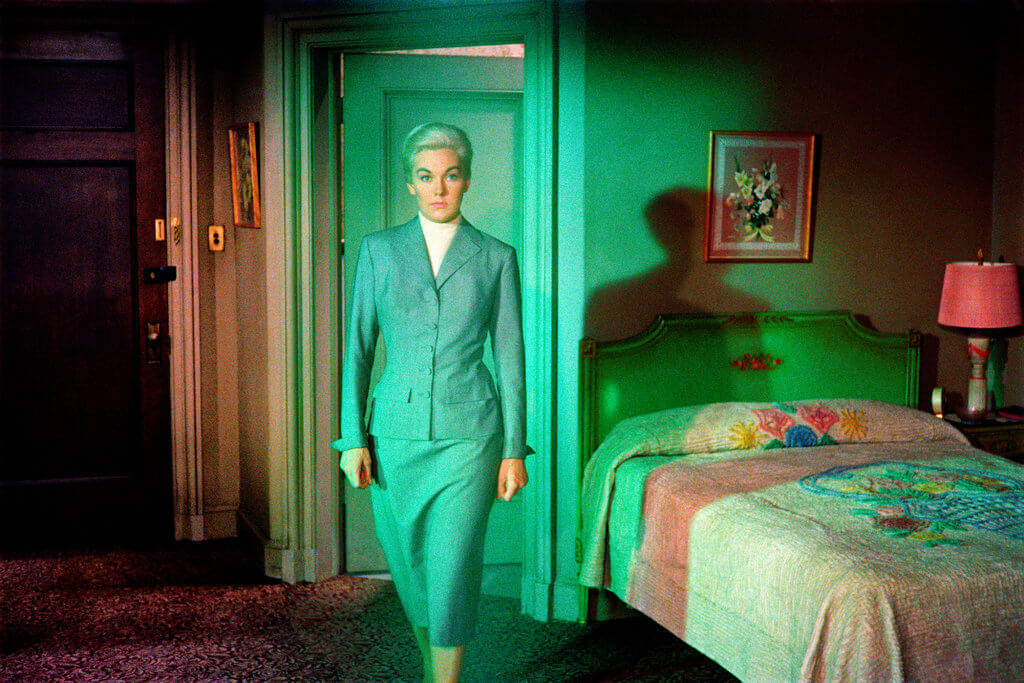
Judy as Madeleine • Vertigo movie summary
The charade is up when Judy puts on the necklace that is supposed to be Carlotta’s. Scottie drives her back to the Mission, enraged.
He pushes her up the tower, forcing her to admit to her deceit just as they’ve reached the top (Scottie has now overcome his fear of heights). She sobs for him to forgive her. A figure approaches behind them. Judy jolts backwards and accidentally falls off the side of the tower, recreating the death she helped fake.
It turns out it was just a nun, and the Vertigo ending is Scottie staring down at his now twice-lost love.
Related Posts
Vertigo Movie Explained
Why Vertigo is one of the greats
Just reading a summary of the Vertigo plot, one might not understand why the movie would end up being considered one of the greatest films of all time. A weird guy gets caught up in a convoluted murder scheme and is so turned on by one of the perpetrators he loses his mind? Sounds like an average Tuesday.
Of course, the plot actually is very compelling and the twists are executed excellently. But what makes Vertigo stand out are two primary elements: its themes and its inventive use of film form.
Vertigo Themes
In one of Alfred Hitchcock’s earlier films, Rear Window, he investigated the voyeuristic nature of cinema from the perspective of an audience member. In Vertigo, Hitchcock returns to his meta investigation of film, but from the perspective of the director.
Any Vertigo analysis needs to address Hitchcock as a man. It’s well known that Hitchcock was a demanding auteur who expected nothing less than excellence. He had little patience for actors in particular, whom he referred to as “cattle.” And his relationship with female actors was even more strained.
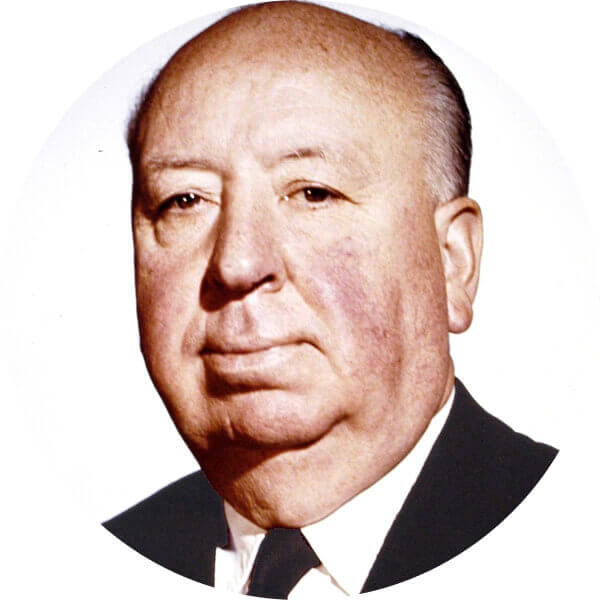
ALFRED HITCHCOCK ON ACTORS:
When they had a matinee, they’d leave the set, I felt, much too early for the matinee, and I suspected they were allowing themselves plenty of time for a very leisurely lunch… I have no use for that kind of actor.
Perhaps the most famous example of this was with his muse Tippi Hedren, who starred in Hitchcock’s films The Birds and Marnie. The director was outright abusive toward the star, making advances towards her and, when she declined, taking his anger out on her on set.
Hedren collapsed from mental and physical exhaustion after a brutal day on the set of The Birds where Hitchcock had actual birds attack the actor.
She was sent to a doctor, who recommended she take at least a week’s rest. Hitchcock protested, and the doctor replied, “Are you trying to kill her?”
This controlling and abusive relationship Hitchcock had toward women is reflected clearly and with purpose in Vertigo characters. The most devastating scenes of the film are when Scottie (taking the role of director) forces Judy to look like Madeleine. It is clear this is hurting Judy, but Scottie can’t help himself — he needs her to look perfect, just how he envisions her in his mind.
There’s a remarkable self-awareness here on the part of Hitchcock. For all of Scottie’s efforts, he can’t make her the woman in his head, the character she was portraying. Judy herself is an actor, having played “Madeleine” for most of the film. It infuriates Scottie that she can’t wholly be the woman she played, just as it infuriated Hitchcock his muses were not as flawless and elegant in real life as they were in front of his camera.
Thus, this form of erotic directing is in the end futile, resulting in nothing but heartbreak and devastation.
Vertigo movie explained
This dissection of filmmaking is a main reason why Vertigo has endured all these years — the moral paradox at the heart of the film remains a moral paradox within Hollywood to this day, as many powerful filmmakers walk the line between demanding director and manipulative abuser.
This Vertigo explainer video discusses this theme and its interaction with other ideas investigated throughout the film, such as fear and desire:
These themes are what make Vertigo such a fascinating movie elevated beyond just a captivating thriller. There’s a lot on the film’s mind.
Vertigo Filmmaking Techniques
The pure filmmaking of Vertigo is near-perfect. Every scene could be dissected for a showcase of a different film element: editing, score, cinematography, direction, acting, set design.
Let’s start with the opening credits. Immediately, Vertigo establishes itself as boundary-pushing. Take a look:
Vertigo movie analysis
From the very beginning, Vertigo is preoccupied with women as objects to be molded. The first shot is an extreme close-up of the features of a woman’s face. The shot ends on the woman’s eye, and the title of the film originates from her pupil, which we come to realize has a double meaning, as Judy is labelled by Scottie as Gavin’s “pupil.”
Then there’s the showcase of experimental animation concocted by the great Saul Bass (a master of title sequences). It’s mesmerizing and inventive, seeming to bring the audience into the entrancement that will capture Madeleine and Scottie.
Did You Know?
The church tower at Mission San Juan Bautista from which “Madeleine” and Judy fall was destroyed before production of Vertigo began. The tower shown in the film is a matte painting.
Arguably, the most influential technique coined in Vertigo is the dolly zoom (also, fittingly, called the Vertigo Effect). In the film, it’s used as a visual metaphor for Scottie’s acrophobia. Any time he gets too high up, we are put into his perspective with a dolly zoom that is disorienting and off-putting.
For more on the dolly zoom, watch our comprehensive overview on the shot:
The effect of Vertigo summary • Subscribe on YouTube
And this is just the tip of the iceberg when it comes to the form on display in Vertigo. Composer Bernard Herrmann is firing on all cylinders with a gorgeous score that haunts viewers long after the picture’s over. Cinematographer Robert Burks is filling each scene with stunning compositions, like this:
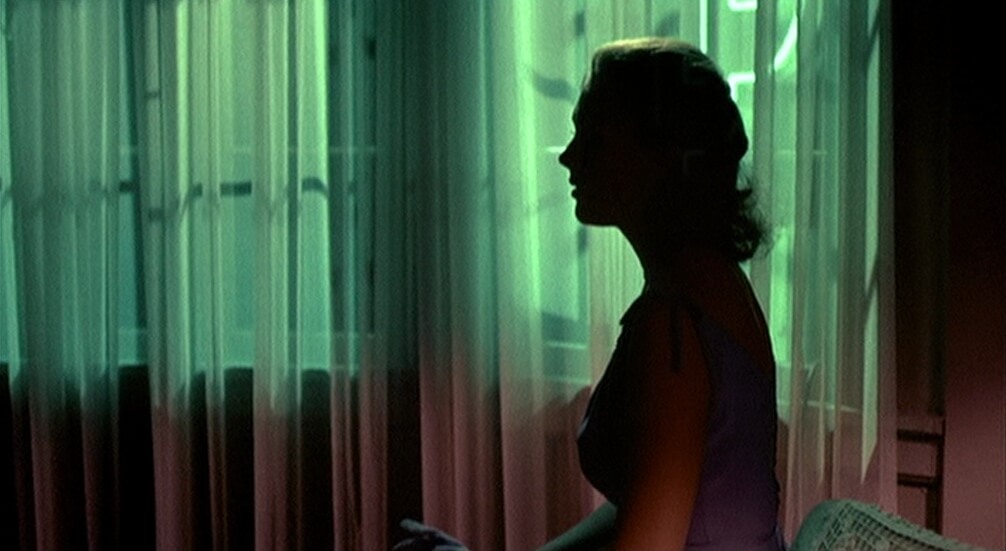
Vertigo movie ending
James Stewart gives one of his most nuanced performances, playing a deeply troubled soul who exists in the moral gray (a type of character Stewart would usually avoid). And Kim Novak is heartbreaking as Judy, helping create one of Hitchcock’s most sympathetic and dimensional female characters.
Vertigo is a film put together by creatives operating at the peaks of their power, and it comes through in every frame.
Vertigo Movie Explained
The legacy of Vertigo
To this day, Vertigo looms large over filmmakers. It’s been declared the greatest film of all time by Sight & Sound, largely considered to be the most definitive ranking of the medium.
Many directors still get inspiration from Vertigo. Listen to Martin Scorsese discuss the film:
Vertigo explained by Mr. Scorsese
Scorcese’s connection to these long driving sequences in Vertigo is unsurprising if you’ve seen Taxi Driver, a film filled with scenes echoing Vertigo as the protagonist Travis Bickle scours the streets from his car.
Scorcese isn’t the only celebrated director to paraphrase Hitchcock. Take a look at this groundbreaking sequence from Vertigo, Scottie’s nightmare:
Vertigo movie meaning
None other than Stanley Kubrick’s 2001: A Space Odyssey echoes this experimental scene, when 2001’s protagonist travels through time.
Or, more obviously, the sequence is referenced in Toy Story 2:
Vertigo for Woody
And these are just some of the more blatant disciples of Vertigo. So much of the film’s DNA can be found throughout the cinema of the 20th and 21st century. The list of films influenced by Vertigo could go on forever, a testament to the film’s lasting power.
UP NEXT
Parasite explained
Vertigo might be the consensus pick for the greatest film of all time; Parasite might be the consensus pick for the greatest film of the past five years. Check out our examination of what makes the film successful on so many levels.
Up Next: Parasite analysis →
Showcase your vision with elegant shot lists and storyboards.
Create robust and customizable shot lists. Upload images to make storyboards and slideshows.
